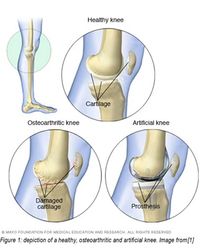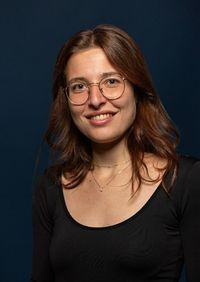Sharing is Caring
Regenerative Orthopaedics Department - AO Research Institute Davos (CH)
Laboratory for Experimental Orthopaedics - Maastricht University (NL)
Laura Mecchi
“Hey, look what I found! What do you think of it?”
Has it ever happened to you, to feel this growing excitement about something, you cannot wait to share it with someone else? This is also what happens when scientists share their work with peers. In this way, experts can contribute with their own work to a collective pool of knowledge, to understand better a certain topic. This can foster collaborations and team work to problem-solving which ultimately bring advancement in the field. Sharing research also promotes transparency and allow for critique and refinement leading to reliability and rigor of scientific findings and methodologies. Eventually, the aim is to catalyse progress and address pressing challenges in the modern world, especially health-wise.
This is also the aim of this Ostaskills consortium, bringing together many institutions and researchers with different background and expertise, to advance in the field of joint diseases knowledge and treatment.
How does our body work?
Joint problems are the cause of pain for millions of people worldwide. They can be due to the tissue degeneration following a traumatic injury, such as tendons rupture, or due to the development of a disease, as in the cases of arthritis and osteoarthritis. Osteoarthritis (OA) is one of the most common degenerative diseases, inevitable consequence of ageing, affecting especially females, and leading to joint cartilage degeneration. [2] It can attack any joint, however the most affected districts are knees, hands, hips and spine. Some of the most common symptoms along with pain are stiffness and tenderness of the joint, loss of flexibility and limited range of movement. [1, 3] The most common approaches are anti-inflammatory medications, physical therapy or transcutaneal nerve stimulation and cortisone injections.
When the disease progresses, surgical interventions are required, but in the worst cases joint replacement is the only option (Figure 1).
One interesting surgical approach, prior to joint replacement, is called microfracture. It consists of making a microfracture in the surface of cartilage, so that a small quantity of blood and local cells come to the surface of the joint with the aim to let these cells produce new tissue.[4] However, up to this date, despite the increasing research on this topic, there are no resolutive treatments to OA. So, what can we do to make the lives of people suffering from OA better, alleviate their pain and maybe even stop the course of the disease? The answer is trying to understand how our body works. To do this, researchers build models in the lab to mimic the joint environment, called in vitro models. These models represent in a small scale what happens inside the joint and they allow to study different aspects that are relevant in real life, and in this case, to the study of OA. These models can also be useful to investigate how the tissues could regenerate. This knowledge would be especially interesting, because it could then be translated into the clinical practice to develop new therapies for OA patients.
The mechanics of the joint
A very interesting avenue in the panorama of in-vitro models is the use of the so-called bioreactors. These are machines that help mimicking the mechanical environment of the joints, and this has a very important part in the understanding of how the joint works. But what is so special about these bioreactors? They are so interesting because they allow researchers to get a deeper understanding of the mechanical actions that take place in the joint and of their effect on the tissues involved, also at the cellular level.
One approach that has been explored is the combination of human Mesenchymal Stromal/Stem Cells (hMSCs) in a scaffold under mechanical load to study their differentiation into chondrocytes. Let’s analyse the previous sentence with a closer look: MSCs are cells that can transform into different cell types, including cartilage cells, and these are called chondrocytes. We all have in our body both these cell types: MSCs are “hidden” in some niches in the tissue and act under very specific circumstances, while chondrocytes are constantly present in our cartilage and help preserve it.[5] A scaffold, in an in-vitro model, is a support material for the cells, needed so that they can stay in place. There are many materials that can be used to mimic cartilage: the most common are hydrogels which are humid and have a jelly consistency. One of the most used hydrogels is fibrin, which is basically the same material that our body produce when the blood clots. So the combination of MSCs with fibrin, is a simple model that recapitulates the environment after the microfracture surgery, briefly described in the previous chapter. Bioreactors then applies forces on this construct and these forces mimic the forces experienced from the patient after surgery. As a results, scientists study how these forces impact on the construct. An interesting approach is to look for specific forces that are beneficial and trigger MSC into becoming chondrocytes, forming new cartilage tissue: these forces could be translated into specific movements to apply in a physiotherapy approach to patients.[6, 7]
This is just one of many approaches to the research of OA and I invite you to visit the previous posts from Atharva Damle and Carolina Serrano Larrea, to discover more about OA and how researchers are trying to tackle this issue.
No scientist is an island
At this point one question arises: how does the knowledge, gained from scientists’ work, get outside the laboratory and make its way to the clinics? The first step is through conferences. A conference is an event where scientists from different laboratories, from different countries, all meet and share their research and ideas for a couple of days. Talks are organized, poster are printed out with the most novel research results. Each conference has a different focus: some focus more on orthopaedic, some others on novel approaches to regenerate tissues, some others on infection-related topics, and many more. Some conferences have thousands of participants, some just a few hundreds, but what matters is that science is being shared. In this way the knowledge can be discussed, and finally bring progress. Clinicians and people working in industry attend conferences as well. This makes it even more important, because is where research meets the outside world and is applied in clinics or industry.
Wrap up
To conclude, there are many different approaches to study OA and its possible solutions. One very important point, if we want to have a better understanding of what happens in vivo, is to include mechanical load in our models in vitro, so that we can have meaningful results. Another important step is to share these results, especially with people from different background, so that these results can evolve and inspire for future research and finally have an impact in the clinics.
To learn more about the research we do at the AO Research Institute, please visit our website.

